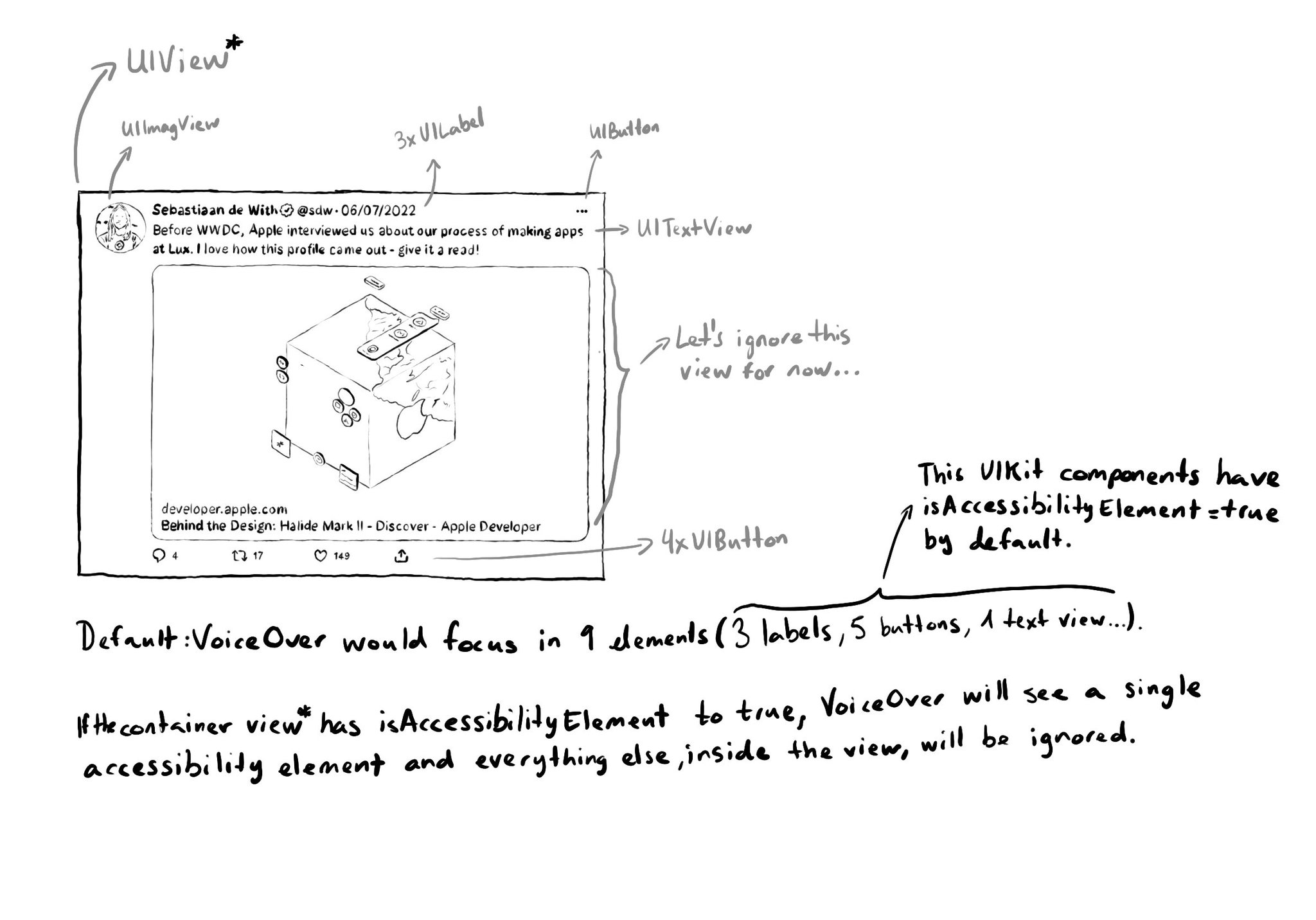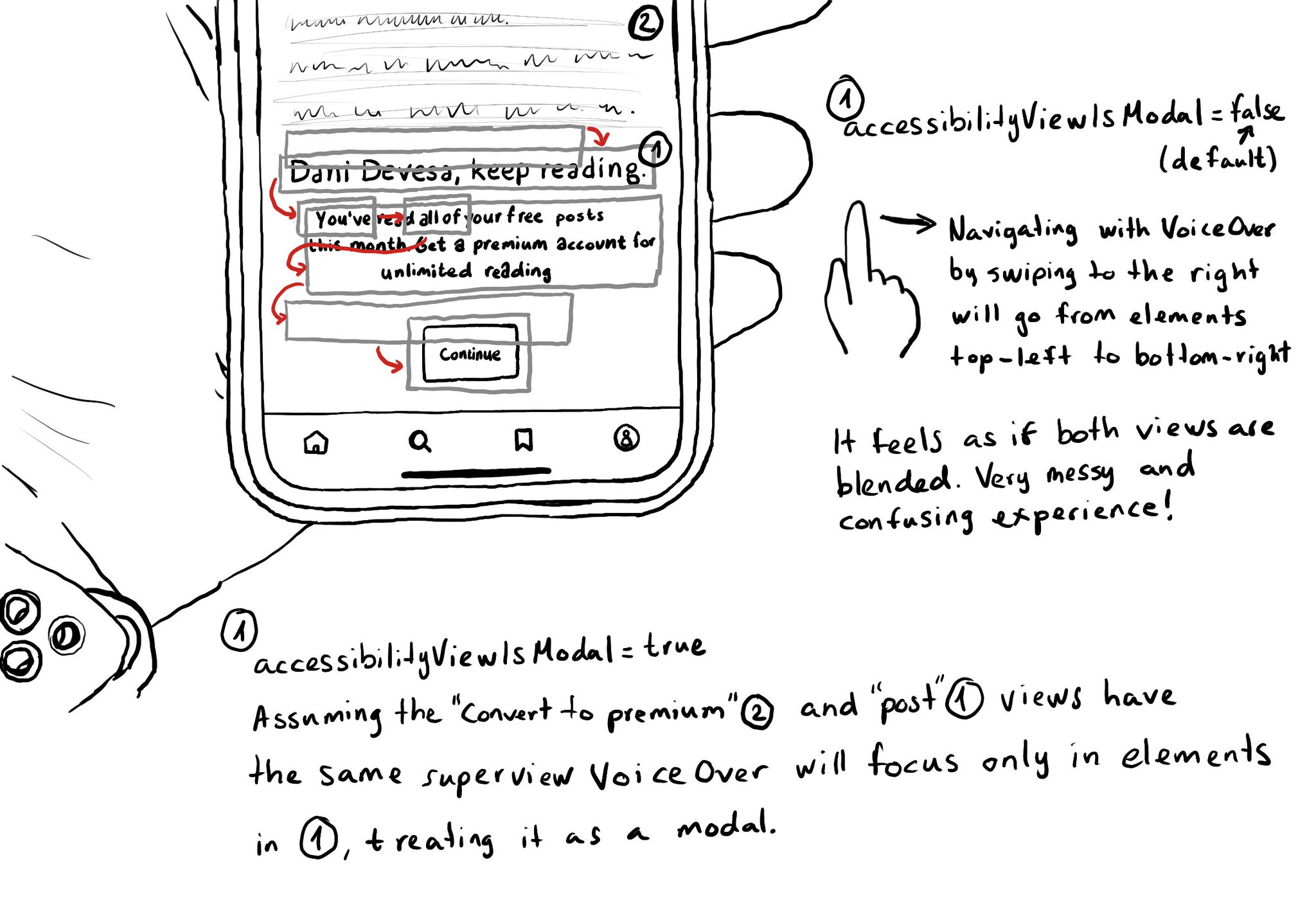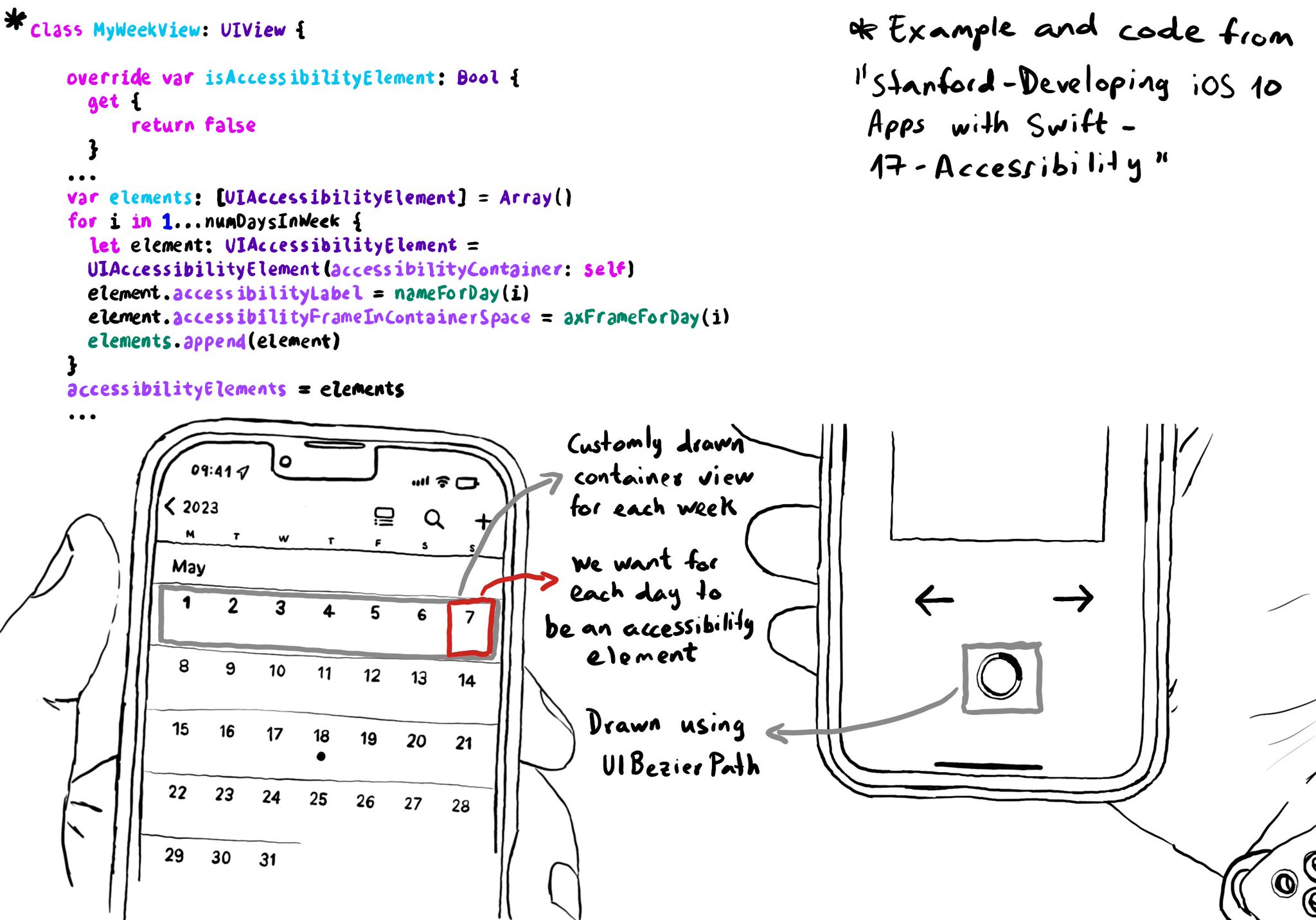When setting isAccessibilityElement to true, assistive tech like VoiceOver will stop looking for other accessible elements in that view hierarchy. So if we make a view accessible, its subviews, including buttons and labels won't be accessible.

You may also find interesting...

When presenting a UI component that overlays the existing UI, you may have found that VoiceOver starts to randomly jump between the overlaid UI and the elements underneath. To avoid that, you can set its accessibilityViewIsModal to true. When setting the accessibilityViewIsModal to true for a view, VoiceOver will ignore its sibling views, treating it as if it was a modal. Useful when presenting custom popups, popovers, modals, action sheets, etc. https://developer.apple.com/documentation/objectivec/nsobject-swift.class/accessibilityviewismodal

You can create your own accessibility elements from scratch. One use-case for doing that is when you do some custom drawing instead of building your UI using or relying on UIKit components. A circular progress bar, could be an example.

Support both orientations, if possible. I know not even iOS itself does it, but it hasn't always been like that. You'll create a more robust UI that will be easier to port to iPadOS. And especially, don't force your users to rotate their devices.